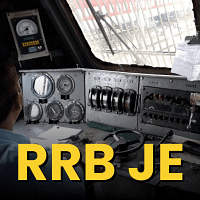Railways Exam > Railways Questions > When the vibrating object moves backwards, i...
Start Learning for Free
When the vibrating object moves backwards, it creates a region of low pressure in the medium called _______________.
- a)Elongation
- b)Perpetuation
- c)Gyration
- d)Rarefaction
Correct answer is option 'D'. Can you explain this answer?
| FREE This question is part of | Download PDF Attempt this Test |
Verified Answer
When the vibrating object moves backwards, it creates a region of low...
The vibrating object produces a series of compressions and rarefactions, one after the other in the medium. These pulses travel one behind the other as the sound waves move forward. When this sound wave reaches our ear, it forces the tympanic membrane to vibrate and thus causes the sensation of hearing.
View all questions of this test

|
Explore Courses for Railways exam
|

|
Similar Railways Doubts
When the vibrating object moves backwards, it creates a region of low pressure in the medium called _______________.a)Elongationb)Perpetuationc)Gyrationd)RarefactionCorrect answer is option 'D'. Can you explain this answer?
Question Description
When the vibrating object moves backwards, it creates a region of low pressure in the medium called _______________.a)Elongationb)Perpetuationc)Gyrationd)RarefactionCorrect answer is option 'D'. Can you explain this answer? for Railways 2024 is part of Railways preparation. The Question and answers have been prepared according to the Railways exam syllabus. Information about When the vibrating object moves backwards, it creates a region of low pressure in the medium called _______________.a)Elongationb)Perpetuationc)Gyrationd)RarefactionCorrect answer is option 'D'. Can you explain this answer? covers all topics & solutions for Railways 2024 Exam. Find important definitions, questions, meanings, examples, exercises and tests below for When the vibrating object moves backwards, it creates a region of low pressure in the medium called _______________.a)Elongationb)Perpetuationc)Gyrationd)RarefactionCorrect answer is option 'D'. Can you explain this answer?.
When the vibrating object moves backwards, it creates a region of low pressure in the medium called _______________.a)Elongationb)Perpetuationc)Gyrationd)RarefactionCorrect answer is option 'D'. Can you explain this answer? for Railways 2024 is part of Railways preparation. The Question and answers have been prepared according to the Railways exam syllabus. Information about When the vibrating object moves backwards, it creates a region of low pressure in the medium called _______________.a)Elongationb)Perpetuationc)Gyrationd)RarefactionCorrect answer is option 'D'. Can you explain this answer? covers all topics & solutions for Railways 2024 Exam. Find important definitions, questions, meanings, examples, exercises and tests below for When the vibrating object moves backwards, it creates a region of low pressure in the medium called _______________.a)Elongationb)Perpetuationc)Gyrationd)RarefactionCorrect answer is option 'D'. Can you explain this answer?.
Solutions for When the vibrating object moves backwards, it creates a region of low pressure in the medium called _______________.a)Elongationb)Perpetuationc)Gyrationd)RarefactionCorrect answer is option 'D'. Can you explain this answer? in English & in Hindi are available as part of our courses for Railways.
Download more important topics, notes, lectures and mock test series for Railways Exam by signing up for free.
Here you can find the meaning of When the vibrating object moves backwards, it creates a region of low pressure in the medium called _______________.a)Elongationb)Perpetuationc)Gyrationd)RarefactionCorrect answer is option 'D'. Can you explain this answer? defined & explained in the simplest way possible. Besides giving the explanation of
When the vibrating object moves backwards, it creates a region of low pressure in the medium called _______________.a)Elongationb)Perpetuationc)Gyrationd)RarefactionCorrect answer is option 'D'. Can you explain this answer?, a detailed solution for When the vibrating object moves backwards, it creates a region of low pressure in the medium called _______________.a)Elongationb)Perpetuationc)Gyrationd)RarefactionCorrect answer is option 'D'. Can you explain this answer? has been provided alongside types of When the vibrating object moves backwards, it creates a region of low pressure in the medium called _______________.a)Elongationb)Perpetuationc)Gyrationd)RarefactionCorrect answer is option 'D'. Can you explain this answer? theory, EduRev gives you an
ample number of questions to practice When the vibrating object moves backwards, it creates a region of low pressure in the medium called _______________.a)Elongationb)Perpetuationc)Gyrationd)RarefactionCorrect answer is option 'D'. Can you explain this answer? tests, examples and also practice Railways tests.

|
Explore Courses for Railways exam
|

|
Suggested Free Tests
Signup for Free!
Signup to see your scores go up within 7 days! Learn & Practice with 1000+ FREE Notes, Videos & Tests.























